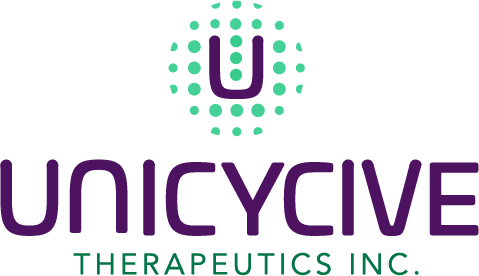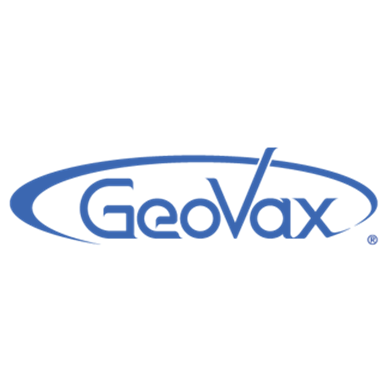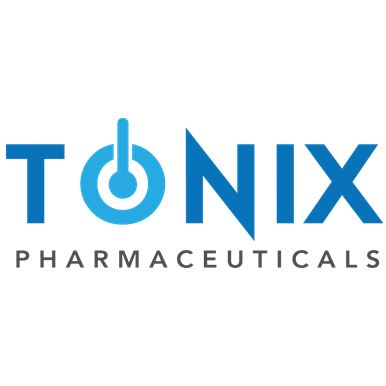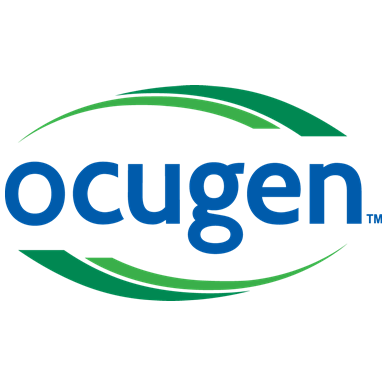
Research News and Market Data on UNCY
October 30, 2025 7:05am EDT Download as PDF
Analysis of the data from the open-label pivotal trial of oxylanthanum carbonate (OLC) highlights that pill burden was significantly reduced in terms of both pill volume (7x) and pill count (2x) from pre-trial phosphate binder therapy
LOS ALTOS, Calif., Oct. 30, 2025 (GLOBE NEWSWIRE) — Unicycive Therapeutics, Inc. (Nasdaq: UNCY), a clinical-stage biotechnology company developing therapies for patients with kidney disease (the “Company” or “Unicycive”), today announced that it will present new oxylanthanum carbonate (OLC) data at the American Society of Nephrology (ASN) Kidney Week 2025, which will take place in Houston, TX, from November 5-9, 2025.
“Treatment with our investigational phosphate binder OLC led to clinically meaningful and statistically significant reductions in pill burden in terms of both volume and number of pills, giving us even more conviction about the potential benefits and convenience OLC may offer to patients,” said Shalabh Gupta, MD, Chief Executive Officer of Unicycive. “We look forward to offering OLC to chronic kidney disease (CKD) patients with hyperphosphatemia upon its approval as we diligently work to resubmit our New Drug Application by year-end.”
The open-label, single-arm, multicenter, multidose study enrolled 86 CKD patients on dialysis with mean historical serum phosphate ≥4.0 and ≤7.0 mg/dL for ≥8 weeks. 72 of these patients completed the study, and 70 had pretrial phosphate binder data. After washout from their prior phosphate binder, patients received OLC 500mg three times per day (TID), titrated to a maximum of 1000mg TID over 6 weeks, followed by a 4-week maintenance period. Pretrial phosphate binders included sevelamer carbonate, calcium acetate, ferric citrate and sucroferric oxyhydroxide. Results from the study will be shared in a poster titled “Oxylanthanum Carbonate Achieves Serum Phosphate Control with Significantly Lower Pill Burden in Dialysis Patients with Hyperphosphatemia” on Thursday, November 6 from 10:00 a.m. – 12:00 p.m. CT.
Key Findings:
- The mean daily pill volume of pretrial binders at screening was 9.3 cm3, compared to a mean daily pill volume of binders at study end with OLC of 1.4 cm3 (Figure 1)
- Ahead of enrolling in the trial, patients took a mean of 8.3 pills/day of phosphate binders, compared to a mean of 3.9 OLC pills/day at study end (Figure 1)
- Serum phosphate was ≤5.5 mg/dL in 59% of patients at screening and in 91% of patients at the end of the OLC titration period
Figure 1:

“Reducing pill burden, in both of the number and volume of swallowed medication while improving phosphate control, represents a clinically meaningful innovation for the treatment of hyperphosphatemia in people with chronic kidney disease on dialysis,” said Dr. Pablo Pergola, MD, PhD, Research Director, Clinical Advancement Center, Renal Associates, P.A., and principal investigator of the trial. “This new analysis highlights the key benefits of this potentially transformative treatment that can become the new standard of care.”
The poster will be made available on the Presentations & Research page of Unicycive’s website following the poster presentation.
About Oxylanthanum Carbonate (OLC)
OLC is an investigational oral phosphate binder that leverages proprietary nanoparticle technology to deliver high phosphate binding potency, reducing the number and size of pills that patients must take to treat hyperphosphatemia in patients with chronic kidney disease (CKD) on dialysis. Its potential best-in-class profile may have meaningful patient adherence benefits over currently available treatment options as it requires a lower pill burden.
Unicycive is seeking Food and Drug Administration approval of OLC via the 505(b)(2) regulatory pathway. The New Drug Application submission package is based on data from three clinical studies (a Phase 1 study in healthy volunteers, a bioequivalence study in healthy volunteers, and a tolerability study of OLC in CKD patients on dialysis), multiple preclinical studies, and the chemistry, manufacturing and controls data. OLC is protected by a strong global patent portfolio including issued patents on composition of matter with exclusivity until 2031, and with the potential for patent term extension until 2035.
About Hyperphosphatemia
Hyperphosphatemia is a serious medical condition that occurs in nearly all patients with End Stage Renal Disease (ESRD). Annually there are over 450,000 individuals in the U.S. that require medication to control their phosphate levels.1 Uncontrolled hyperphosphatemia is strongly associated with increased death and hospitalization for chronic kidney disease (CKD) patients on dialysis. Treatment of hyperphosphatemia is aimed at lowering serum phosphate levels via two means: (1) restricting dietary phosphorus intake; and (2) using, on a daily basis, and with each meal, oral phosphate binding drugs that facilitate fecal elimination of dietary phosphate rather than its absorption from the gastrointestinal tract into the bloodstream.
1Flythe JE. Dialysis-Past, Present, and Future: A Kidney360 Perspectives Series. Kidney360. 2023;4(5):567-568. doi: 10.34067/KID.0000000000000145.
About Unicycive Therapeutics
Unicycive Therapeutics is a biotechnology company developing novel treatments for kidney diseases. Unicycive’s lead investigational treatment is oxylanthanum carbonate, a novel phosphate binding agent for the treatment of hyperphosphatemia in patients with chronic kidney disease who are on dialysis. Unicycive’s second investigational treatment UNI-494 is intended for the treatment of conditions related to acute kidney injury. It has been granted orphan drug designation (ODD) by the FDA for the prevention of Delayed Graft Function (DGF) in kidney transplant patients and has completed a Phase 1 dose-ranging safety study in healthy volunteers. For more information, please visit Unicycive.com and follow us on LinkedIn and X.
Forward-looking statements
Certain statements in this press release are forward-looking within the meaning of the Private Securities Litigation Reform Act of 1995. These statements may be identified using words such as “anticipate,” “believe,” “forecast,” “estimated” and “intend” or other similar terms or expressions that concern Unicycive’s expectations, strategy, plans or intentions. These forward-looking statements are based on Unicycive’s current expectations and actual results could differ materially. There are several factors that could cause actual events to differ materially from those indicated by such forward-looking statements. These factors include, but are not limited to, clinical trials involve a lengthy and expensive process with an uncertain outcome, and results of earlier studies and trials may not be predictive of future trial results; our clinical trials may be suspended or discontinued due to unexpected side effects or other safety risks that could preclude approval of our product candidates; risks related to business interruptions, which could seriously harm our financial condition and increase our costs and expenses; dependence on key personnel; substantial competition; uncertainties of patent protection and litigation; dependence upon third parties; and risks related to failure to obtain FDA clearances or approvals and noncompliance with FDA regulations. Actual results may differ materially from those indicated by such forward-looking statements as a result of various important factors, including: the uncertainties related to market conditions and other factors described more fully in the section entitled ‘Risk Factors’ in Unicycive’s Annual Report on Form 10-K for the year ended December 31, 2024, and other periodic reports filed with the Securities and Exchange Commission. Any forward-looking statements contained in this press release speak only as of the date hereof, and Unicycive specifically disclaims any obligation to update any forward-looking statement, whether as a result of new information, future events or otherwise.
Investor Contacts:
Kevin Gardner
LifeSci Advisors
kgardner@lifesciadvisors.com
Media Contact:
Layne Litsinger
Real Chemistry
llitsinger@realchemistry.com
SOURCE: Unicycive Therapeutics, Inc.
A photo accompanying this announcement is available at https://www.globenewswire.com/NewsRoom/AttachmentNg/8d991a15-c7e1-47a4-b982-5a47d0653409

Figure 1

Figure 1
Source: Unicycive Therapeutics, Inc.
Released October 30, 2025




















